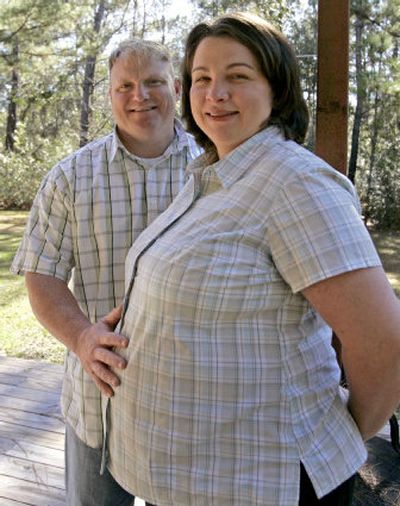Woman to give birth after embryo rescue

NEW ORLEANS – The baby album for Rebekah Markham’s soon-to-be-born child could include something extra special: photos of officers using flat-bottomed boats to rescue frozen embryos from a sweltering hospital in the chaotic aftermath of Hurricane Katrina.
Markham is about to give birth via Caesarean section nine months after being implanted with one of those embryos that nearly thawed when the flooded hospital lost electricity.
“It’s going to be exciting for the little baby, once he gets old enough to realize what it went through,” said Markham, a 32-year-old physical therapist whose husband, Glen, 42, is a New Orleans police officer. “Katrina’s history. A big part of history.”
The baby – the Markhams are guessing it’s a boy – will be one of the first children to be born from the more than 1,400 embryos that were rescued from New Orleans’ Lakeland Hospital two weeks after the storm. The C-section is set for Jan. 16.
Because of fertility problems for both husband and wife, a clinic created embryos from her egg and his sperm in 2003. Two were implanted immediately, and one grew into their first child – a boy who turned 1 just before Hurricane Katrina. The rest were stored in liquid nitrogen tanks at about minus 320 degrees to be used as needed. The Markhams had always planned to have at least two children.
Their embryos, along with those belonging to hundreds of other couples, were kept at the Fertility Institute’s laboratory at the hospital. Two days before Katrina hit on Aug. 29, 2005, the clinic took steps to protect the embryos by topping off all its tanks with liquid nitrogen and moving them to the third floor.
But Katrina’s eight feet of water knocked out the electricity, and the temperature climbed. A freshly topped-off tank is safe for three to four weeks in an air-conditioned room, but “I’m sure the temperature was over 100 degrees in that hospital,” said Dr. Belinda “Sissy” Sartor, a fertility expert for the institute.
Fearing the embryos would be ruined, she contacted a state lawmaker, who called Gov. Kathleen Blanco, and on Sept. 11, Illinois officers on loan to Louisiana set out in National Guard trucks towing flat-bottomed boats.
A flat surface was essential: The 35- and 40-liter nitrogen tanks, which weigh 75 and 90 pounds, had to stay upright. If one tipped over, the nitrogen would spill.
In the hospital parking lot, the boats puttered past cars still flooded almost up to their windows. The boats were taken through the flooded halls, and the embryos were floated out. They were taken across town to a hospital that had not flooded.
The Markhams, who live in suburban Covington, have not picked out names yet. But if the baby’s a girl, she won’t be called Katrina.
“There’s nothing good associated with that name,” the mother-to-be said.